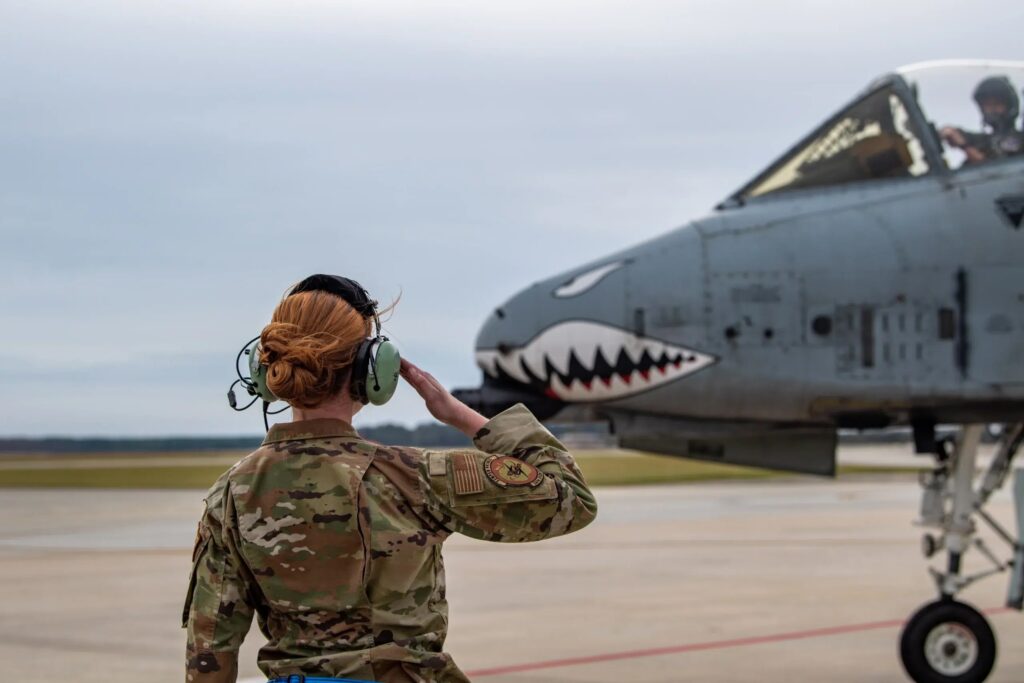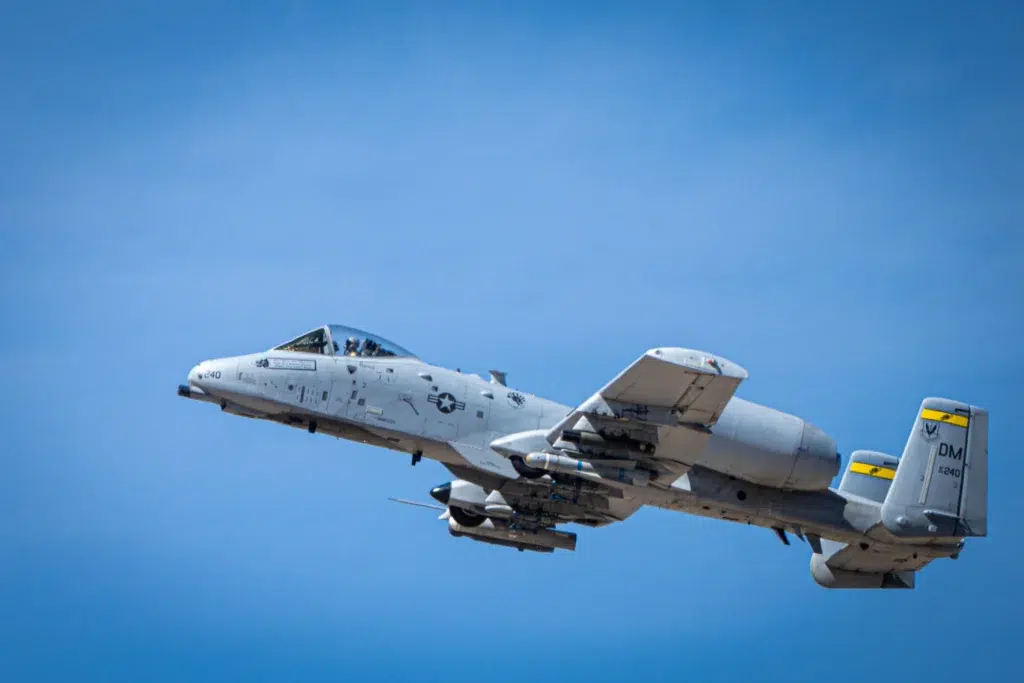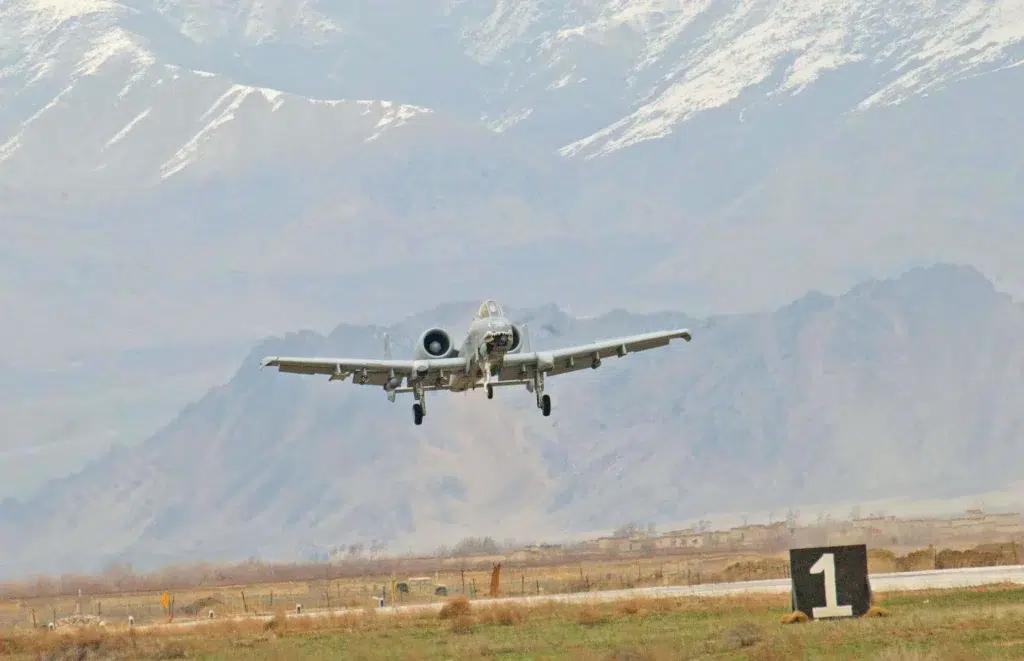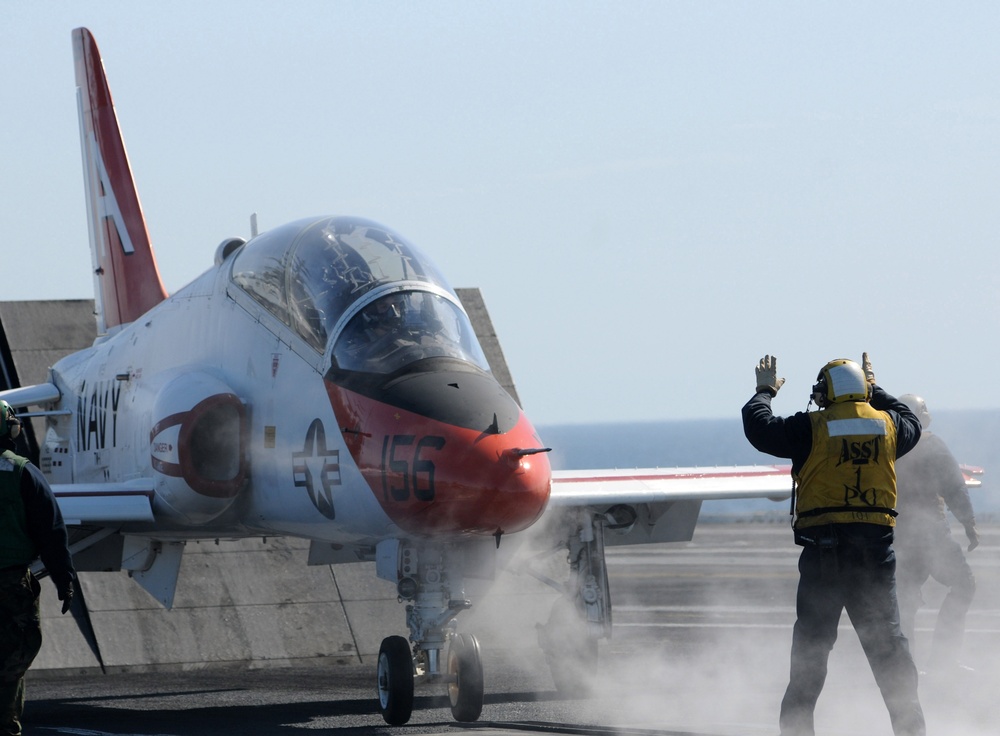The A-10’s long-delayed retirement is rolling forward. What’s next?
- By Hope Seck
Share This Article

It’s official: After years of heated fighting to keep the venerable and beloved A-10 Thunderbolt close air support aircraft in service, Congress is finally allowing the Air Force’s plan to retire the planes. After permitting the first 21 of the service’s roughly 280 A-10s to leave service last year, the House and Senate signed off on the retirement of another 49 in the freshly passed defense policy bill for the 2024 fiscal year.
It appears the Air Force’s plan to retire all its A-10s by 2029 is gaining steam, despite the chorus of advocates who still contend the service can’t afford to get rid of its only dedicated close-air support platform. But as with all matters involving the defense budget and military aircraft, nothing is ever smooth or simple.
According to the new bill, six months before the Air Force sends a single A-10 to the retired list, the secretary of the Air Force is required to deliver to the defense committees a detailed plan demonstrating how well the service is prepared to conduct close air support, forward air controller-airborne, combat search and rescue, and airborne battle management missions.
The report must include the number of combat air forces aviation units required to meet various levels of threat, from steady state to wartime operations; how many proficient aircrews each unit must maintain to be qualified and current; the number of units and personnel who are equipped to meet missions at various readiness states; and the minimum quantity of initial and continuing training sorties crews will need to conduct to be proficient and current in their skills.

Beyond the report, the Air Force secretary is also required to make sure the A-10s designated for retirement are considered for potential transfer to a foreign military ally or partner of the United States. Sen. Marco Rubio, a Florida Republican who has supported the A-10’s retirement, was among the voices last year pushing for the U.S. to give its old A-10s to Ukraine as it continues to defend itself against Russia. However, Ukraine has made it clear that it doesn’t want old “Warthogs” and would much rather get the more modern F-16 Fighting Falcons now being prepped for future delivery to the country.
Once the report is complete, the possibility of foreign transfers has been considered, and another six months have passed, the Air Force must follow Congress’ mandates regarding the condition in which the retiring A-10s must be kept, said Lee Levy, a retired Air Force major general and current CEO of the Levy Group. Levy, who previously supervised the “boneyard” at Arizona’s Davis-Monthan Air Force Base, told Sandboxx News that lawmakers dictate on a plane-by-plane basis the storage and readiness level for retiring aircraft.
Those tapped for “Type 1000” storage must be kept pristine enough to return to active service within a short period, and can’t be raided for spare parts. Type 3000 aircraft are also kept intact and regularly serviced for potential future use. Type 2000 and 4000 planes, on the other hand, can be cannibalized for parts or sold off as DoD excess. Thus, lawmakers may still require the Air Force to pay for officially retired A-10s to be kept in the wings and be ready for flight at any time.
Related: The Air Force created a F-35 ‘Frankenbird’ for the first time – with help from the A-10

While the retirement of powerful A-10 advocates in Congress, including the 2021 departure of Arizona Republican Sen. Martha McSally, helped to clear the way for the A-10’s retirement, Levy said economics likely also played a role in Congress’s measured change of heart. The plane, beloved for the distinctive sound of its GAU-8/A 30mm front-mounted machine gun and rugged reliability on the battlefield, is becoming more costly to keep in service as its systems age.
The A-10’s original maker, Fairchild Republic, went out of business in 2003, and while Boeing picked up the design rights, a shrinking fleet of planes and a long-cold production line means spare parts are increasingly costly. The $1.1 billion A-10 re-winging project completed in 2019, designed to keep two-thirds of the platform’s inventory flying into the 2030s, underscored the expenses required to keep the aircraft combat-worthy.
And then there’s the heart of the Air Force’s argument for retirement: the plane just doesn’t make sense in today’s conflicts.
Related: How F-16s will make the radar-hunting missiles of Ukraine much more capable

“The A-10’s a really great airplane in a very limited environment,” Levy told Sandboxx News. “Because it’s almost so old now that it’s not operationally relevant in any environment where there’s any kind of surface-to-air threat.”
Designed for a 1980s reality in which the prevailing threat was Soviet tanks crossing Germany’s Fulda Gap and targeting NATO assets, the A-10 now poses too much danger to aircrew to operate effectively in most modern combat environments. Meanwhile, Levy said, recent conflicts like Afghanistan showed how the Air Force could execute close-air support missions with less vulnerable aircraft, including, at times, B-2 and B-52 bombers.
“We [needed] something to fly low and slow and just shoot tons and tons of Russian tanks,” Levy explained. “That’s not the universe we live in now.”

Those arguments don’t fully satisfy holdouts who say no existing Air Force platform is as well equipped as the A-10 to defend ground troops from close threats, and pilots of the nearest replacement, the F-35A, aren’t even adequately trained for the mission. Though the A-10 can’t fly forever, these critics want a more satisfying answer from the Air Force on how it plans to fill the Warthog-sized gap in its inventory.
With an election year on tap, though, Levy said there’s an even more worrying prospect: that the Air Force could get midway through its A-10 retirement process and then get shut down by the next class of lawmakers. That, he said, would be a costly disaster.
“There’s pilot training, there’s maintenance training, there’s engine repair shops you have to have, whether you have one airplane or 100,” Levy said. “And oh, by the way, the minute you tell somebody you’re going to be retiring airplanes, everybody heads for the exits in the supply chain.”
Read more from Sandboxx News
Related Posts
Sandboxx News Merch
-

‘AirPower’ Classic Hoodie
$46.00 – $48.00 Select options This product has multiple variants. The options may be chosen on the product page -

‘Kinetic Diplomacy’ Bumper Sticker (Black)
$8.00 Add to cart -

‘Sandboxx News’ Trucker Cap
$27.00 Select options This product has multiple variants. The options may be chosen on the product page
Hope Seck
Hope Hodge Seck is an award-winning investigative and enterprise reporter who has been covering military issues since 2009. She is the former managing editor for Military.com.
Related to: Military Affairs

‘USS Dorado Project’ aims to solve WWII’s biggest submarine mystery

The Navy’s plan for its next trainer jet shows how carrier aviation has changed
Sandboxx News
-

‘Sandboxx News’ Trucker Cap
$27.00 Select options This product has multiple variants. The options may be chosen on the product page -

‘AirPower’ Classic Hoodie
$46.00 – $48.00 Select options This product has multiple variants. The options may be chosen on the product page -

‘AirPower’ Golf Rope Hat
$31.00 Select options This product has multiple variants. The options may be chosen on the product page -

‘Sandboxx News’ Dad Hat
$27.00 Select options This product has multiple variants. The options may be chosen on the product page
